
This timeline made possible by underwriting from Sunrise Market in St. Paul.
Traditionally, Minnesota’s ethnic breakdown was often conflated with immigration from Scandinavian and Germanic countries. And why not? Surely, when the Janssons and Engstroms arrived in Minnesota, they must have been glad to find a place that felt much like home.
But Southern Europe contributes plenty of its own threads to the Minnesota tapestry: Italians (and their food) have played a major role in the state’s development everywhere from the Iron Range to St. Paul to Duluth.
What was the draw for families arriving from Rome? From Sicily? What did they eat upon arrival, and how did their foods plant the seeds for generations of restaurants? These questions drove us to do a little digging into the Italian history of the Land of 10,000 Lakes.
A timeline like this can’t be all inclusive. This project aims to paint a picture of the breadth of Italian food here, from fine dining to red sauce to the ever-controversial “Hot Dago” sandwich. Most of all, we wanted to share what we found out about an often-overlooked part of Minnesota’s immigrant history.
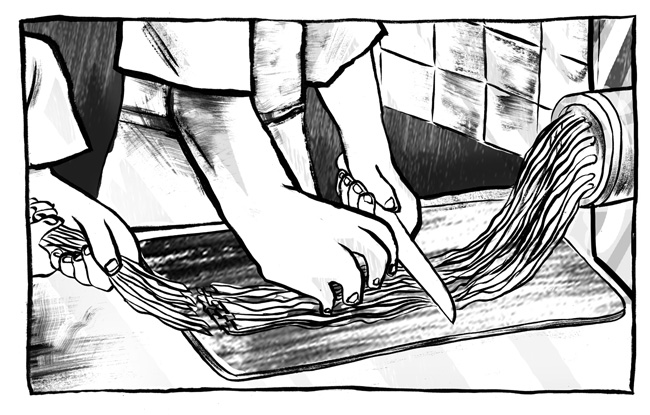
1889 – The Italian Macaroni and Vermicelli Company is established in St. Paul¹
Italian immigrants established themselves as food merchants from their first arrival in the 1850s — selling fruit, vegetables, ice cream, and other foods, especially in the business district of Saint Paul. In 1889, the Italian Macaroni and Vermicelli Company was formed. By 1897, the company was successful enough to be featured in a “permanent display of home-manufactured goods”² at the Market Hall, alongside other vendors including the Hamm Brewing Company.
1899-1914 – Italian immigration to Minnesota gets underway / Saint Paul’s Little Italy¹ develops
Italian immigration to the United States began early in the 19th century, but of the six million Italians who came to America between 1820 and 1980, more than half arrived between 1899 and 1914. Roughly 10,000 immigrants from that period gave Minnesota as their destination, settling mostly in the Twin Cities and Duluth (80 percent of these immigrants settled in these two cities). Minnesota’s Italian-born population peaked in 1910, with the majority coming from agricultural towns with a deeply entrenched sense of community. Additionally, racism against Italians was widespread. Together, these forces encouraged an insular lifestyle, and led to the development of Italian neighborhoods, primarily in Saint Paul’s Upper Levee / Upper Landing and in Swede Hollow, where the Italian section was known as Railroad Island, because of the large number of Italians employed in the railroad trade. Lower Payne Avenue was lined with Italian shops, grocery stores, and restaurants run by and for Italians.
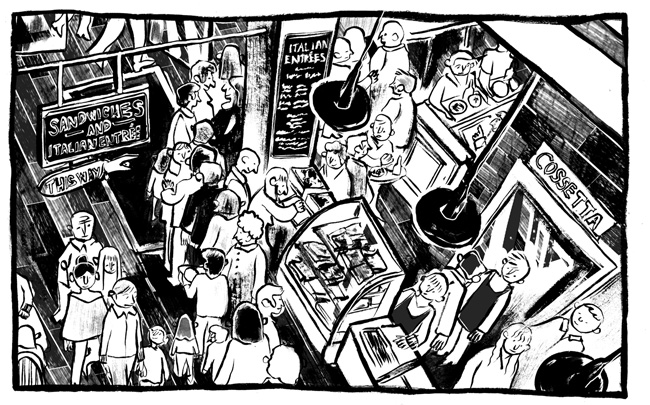
1911 – Cossetta’s Opens
Michael Cossetta arrived from Calabria, Italy (the toe of the boot) and opened a small alimentary (food shop or deli) in the Upper Levee. The shop became one of the Italian cultural staples in the cities, and is still in operation.
Cossetta’s, 211 7th St W, Saint Paul, MN 55102; 651.222.3476
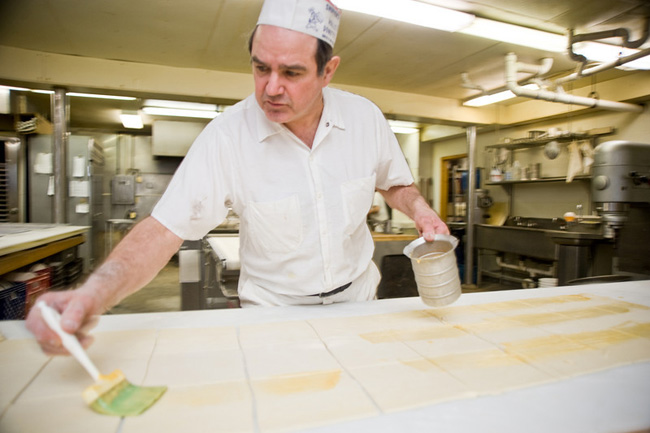
1913 – Sunrise Bakery opens in Hibbing
Giulio Forti emigrated from Rome hoping to secure a mining job, but at age 50 he found mining to be too taxing, so he returned to his roots and opened a bakery. Giulio’s son Vince later expanded the bakery’s offerings from simple country loaves to include sweets, and specialties such as pasties and potica (though pasties are of British origin, and potica is a Slovenian dessert). (Above: Tom Forti Sr)
Sunrise Creative Gourmet, 2135 1st Ave, Hibbing, MN 55746; 218.263.5713
1920 – The Tiburzi brothers, Dick (Federico) and Curly (Fortunato) arrive in Chisolm
from Sarnano, Italy to work on the Iron Range³
Consummate entrepreneurs, the brothers, throughout their time in Minnesota (and especially in the 1930s), started or acquired a variety of food and beverage establishments. Their companies included Fena Food and Beverage in Hibbing, a wine and produce purveyor that became Sunnyhill Liquor and California Winehouse; a bar called Tibroc (a portmanteau of Tiburzi and Rocchi from Matt Rocchi, their partner); but most important was their acquisition of the Chisholm Cafe, whose building in Chisholm is owned by their descendants and operated as Valentini’s. In 2007, a second location, Valentini’s Vicino Lago (Valentini’s by the Lake) opened in Duluth.
Valentin’s Vicino Lago, 1400 London Rd, Duluth, MN 55805; 218.728.5900

1938 – Cafe di Napoli opens on Hennepin Avenue10
This restaurant was one of the early “red sauce” Italian cafes, known for its sweet tomato sauce and large portions. Cafe di Napoli became a fixture of the Italian food scene, drawing celebrity customers such as Laurel and Hardy, George Clooney, and Walter Mondale.
1948 – Mancini’s Char House opens
Using the great steakhouses of Central Italy as a model, Nick Mancini opened his meat-forward restaurant on West Seventh in Saint Paul, near the then-thriving Upper Levee Italian neighborhood. The business is now operated by the second generation of Mancinis.
Mancini’s Char House, 531 7th St W, Saint Paul, MN 55102; 651.224.7345
1951 – Rose and Jim Totino open a takeout pizza shop, Totino’s, in St. Paul.
Later, it becomes a full-service restaurant
If the name Totino is familiar to you, it may be because Rose Totino also founded a frozen pizza company that was eventually sold to Pillsbury (later acquired by General Mills), where Rose was made a vice president. The Totino’s brand now sells 240 million pizzas a year in addition to Totino’s Pizza Rolls (bite-sized pockets filled with pizza toppings). Pizza rolls are now the nation’s best-selling hot snack.
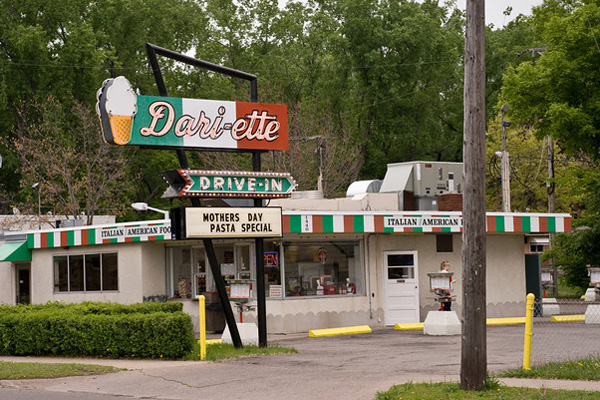
1951 – Dari-ette Drive-In opens
The Saint Paul drive-in was famous for its hot sandwiches, and especially for its spaghetti and meatballs, which became so popular that customers stocked up on the sauce when the drive-in, open seasonally, closed for the winter.17 In 2013, Dari-ette was named one of the country’s 12 best drive-ins.18
Dari-ette Drive-in, 1440 Minnehaha Ave E, Saint Paul, MN 55106; 651.776.3470
1962 – Totino’s opens a frozen pizza plant in Fridley
1966 – Sammy D’s opens in Dinkytown
Giovanna D’Agostino, Sammy’s mother, arrived from Chicago to help her sons set up the restaurant. Sammy’s brother, John, calls her “the driving force” behind the restaurant. The Dinkytown establishment was one of three Italian restaurants within a few blocks of each other: Sammy D’s, the Valli, and Vescio’s. During the 1970s, these three were engulfed in what came to be called the “Italian Restaurant Wars,” with each vying for the attention of the university students who formed most of the customer base.
James Lileks of the Star Tribune recalled: “Each had its own appeal; each had its own clientele. Vescio’s was where you took a date, if you’d met at the Valli. Mama D’s was where the people who liked Vescio’s went when they wanted something different. But here’s the thing: People picked one, and they stuck with it. … It was all red sauce and noodles in the end, but … people chose sides.”7 Perhaps, in the end, what made Mama D legendary was the personality she brought to a restaurant that was, as Lileks describes, just another red sauce Italian restaurant. After all, while Vescio’s could be said to have won the restaurant wars (it is the only one still in operation), people remember Sammy D’s, and later, Mama D’s, for the woman behind them. Vescio’s may have survived, but so has Mama D’s legacy. She once said “Cooks are not born; they’re made.” The same is true of local legends.
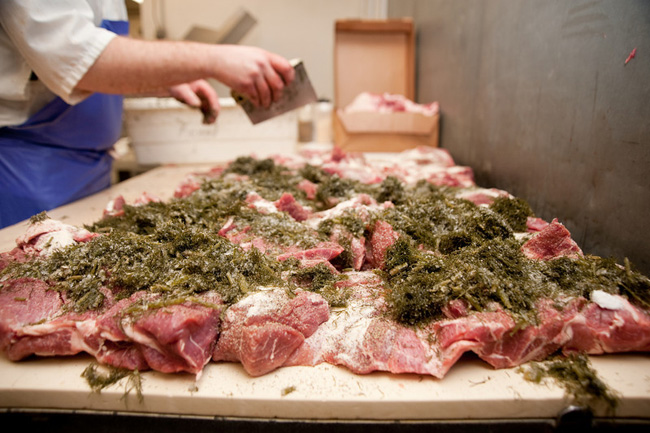
1968 – Leo and Irene Fraboni begin making sausage in Hibbing
Fraboni’s sausages and porketta (above) are still being made, and the operation has expanded to include a wholesale business.
Fraboni’s, 1202 13th Ave E, Hibbing, MN 55746; 218.263.5074
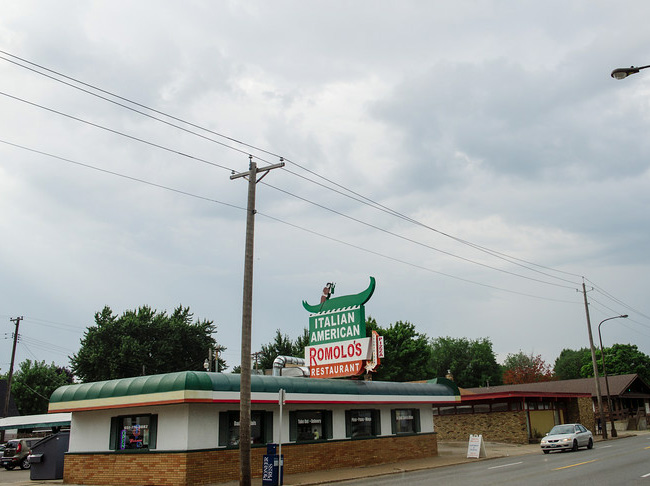
1972 – Romolo’s opens in St. Paul
Still going strong after 40 years of continuous operation, Romolo’s Italian Restaurant is a prototypical Italian-American spot, from its old-school, roofed parking lot to its menu of Italian-American staples.23
Romolo’s Restaurant, 1409 Arcade St, Saint Paul, MN 55106; 651.776.3882
1981 – Pronto opens in downtown Minneapolis
This Italian restaurant, opened by Parasole Restaurant Holdings, soon became one of the top high-end dining spots in the cities. More importantly, it was the restaurant that introduced Minnesota to Italian food beyond the world of red sauce.19 The focus of the restaurant was Northern Italian cuisine,20 which was quite different from the Southern Italian food many Minneapolitans were familiar with. The north is known for risotto and fresh pasta, for cooking with butter as much as olive oil, and as the birthplace of the Slow Food movement.
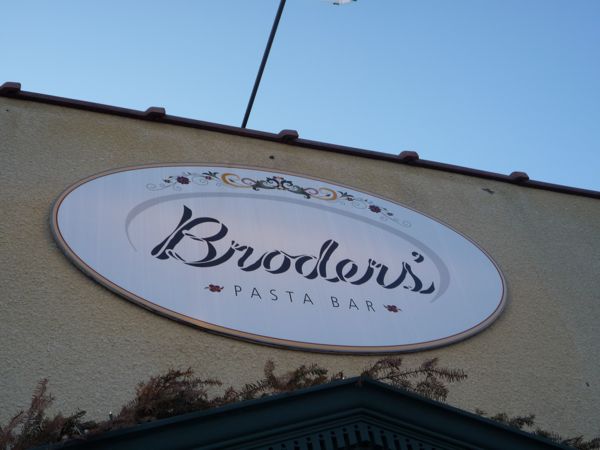
1982 – Broders’ Cucina Italiana opens at 50th and Penn
Tom and Molly Broder returned from studying cooking in Italy (with the feisty cookbook author Marcella Hazan) to open their Italian deli.
Broder’s Cucina Italiana, 2308 50th St W, Minneapolis, MN 55410; 612.925.3113
1983 – Mama D strikes out on her own, crossing the river to Saint Paul
Mama D’s Ristorante Italiano opened in St. Anthony Park with a new menu and Mama D as host. Mama D was a local icon, a celebrity in her own right who “fed the famous and the needy.”6 At Sammy D’s in Dinkytown and subsequently in Saint Paul, Mama D opened the doors every March 19 (the name day of the little-known St. Joseph, patron saint of charity) to serve the poor for free, sometimes feeding as many as 3,500 people. She also cooked for stars — including Tony Bennett — appeared on television, ran for mayor (garnering 10 percent of the vote), wrote several Italian cookbooks, and taught cooking classes to prison inmates. Her lessons and cookbooks focused on what she (somewhat charmingly) called “the SPOGs,” which stood for salt, pepper, oregano, and garlic.5
1984 – Coco Lezzone opens
In an era when the idea of Italian food beyond red sauce was a novelty, chef Tobie Nidetz came from Chicago to open Coco Lezzone in Golden Valley. Speaking of other Italian restaurants of the time, Nidetz said: “Authenticity wasn’t an issue. These restaurants were serving family recipes that had changed over the years to accommodate the ingredients available to them.” In a city where most diners hadn’t seen or tasted pizza until the 1950s, there was no benchmark for Italian food.
Enter Coco Lezzone. Authentic in every detail, Coco had a wood-burning oven built by the artisans who had made the wood oven for Chez Panisse. Coco also had a beeswax wall treatment identical to one the owner had seen in Milan. “If there was an Italian artisan that had a skill we wanted for the decor, plates, glassware or food, … we found them and used them,” says Nidetz.
The restaurant was the result of Nidetz’s commitment to the menu, owners Rick and Dave Webb’s vision, and the guidance of Rosanna Bewick, an Italian living in Minneapolis. Bewick took the partners on a food tour of Italy and provided guidance on keeping the menu and service as authentic as possible. That said, Nidetz no longer feels that authenticity is the key to a great Italian restaurant. “I would no more expect to find an authentic American restaurant in Rome than I would to find an Italian restaurant in Blaine. What’s important today is the authenticity of the chef,” he says.
Unfortunately, between 1984 and 1993, when Highway 12 was expanded into Interstate 394, the associated construction caused a dip in business. Coco’s owners split up, and eventually, the restaurant disappeared, ending its run as a top-notch trattoria. For those seeking a great Italian meal, Nidetz points to Bar La Grassa, a recommendation he doesn’t make lightly. “Pasta is key for me,” says Nidetz, “When the selection is interesting and … they’re presented well, then the place is a winner in my book. There aren’t many in my book.”
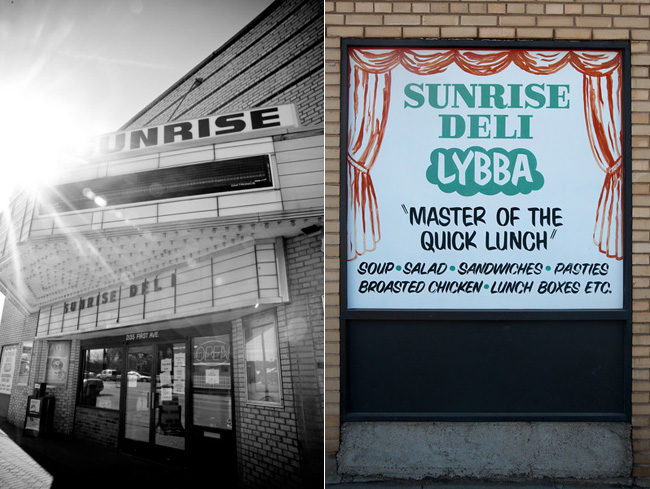
1984 – Sunrise Deli opens
Tom Forti (a grandson of Giulio Forti) and his wife, Mary, expanded the family business to include a deli focused on prepared foods and imported groceries.14
1985 – Figlio opens in Uptown
Parasole opened this restaurant, known for its hearty dishes, at the Lake and Hennepin. It quickly became a trendy neighborhood favorite — a place to see and be seen throughout the 80s and 90s.
1987 – D’Amico opens its first restaurant, D’Amico Cucina, and launches an empire11
Beside its vast array of successful restaurants, D’Amico is noteworthy for producing many of the Twin Cities’ most talented chefs. D’Amico alums include Isaac Becker (Bar La Grassa, Burch Steak), Tim McKee (La Belle Vie, Solera), Doug Flicker (Piccolo), and Bill Summerville (Third Bird).
1987 – Al and Lucille Smith return from Naples, Italy (where Al worked for 3M), and open Ristorante Luci4,8
The couple wanted the restaurant to reflect the culinary lessons they had learned while living in Italy for 11 years, including the value of good ingredients and patience. What could be more Italian than giving food the time it deserves?
Ristorante Luci, 470 Cleveland Ave S, Saint Paul, MN 55105; 651.699.8258
1988 – Cossetta’s Moves to West 7th
1991 – Dominic Villoni, a lawyer visiting from New York, learns of the “Hot Dago” sandwich and tries to have its name banned25
“Dago” is an ethnic slur for people of Italian nationality or descent that curiously comes from the Spanish name “Diego.” While it started as an all-purpose slur against Spanish, Portuguese, and Italian people, it came to refer almost exclusively to Italians. The term, of course, predates the sandwich, and was adopted by Italian restaurateurs to describe this popular combination of Italian sausage, red sauce, and mozzarella on (more often than not) French bread. This Saint Paul staple can be found on the menus of most red-sauce Italian restaurants, including the Dari-ette, where it is has been tactfully renamed the “Italiano.”
1993 – The aptly-named Buca di Beppo (Joe’s Basement) opens in the basement of a Minneapolis apartment building
The Italian-American cuisine and family-style service caught on quickly. Buca expanded to five locations by 1996, and today operates nearly a hundred locations nationwide.
Buca di Beppo, 1204 Harmon Pl, Minneapolis, MN 55403; 612.288.0138
1994 – The Broders open a second restaurant, Broders’ Pasta Bar, at 50th and Penn
The new spot focuses on handmade pasta, offering more than 20 pastas nightly.

1995 – Fraboni’s develops a wholesale operation that spins off from the main company, which continues making their popular sausages
1996 – The Smiths open Luci Ancora (Luci Again) as a way to expand their offerings and space8,9
The new restaurant was intended to showcase dishes from the north of Italy, while the original Luci would prepare dishes from the south. In the end, though, the two have come to be more similar than different; the new space increased capacity more than it increased menu offerings. As Rachel Hutton of Minnesota Monthly wrote: “When pressed, Maria Gans (née Smith), who runs the fronts of houses with her sister Daniela, says the differences are largely the differences of the chefs. … The reasons some diners prefer one over the other … seem either ineffable or somewhat arbitrary.”8
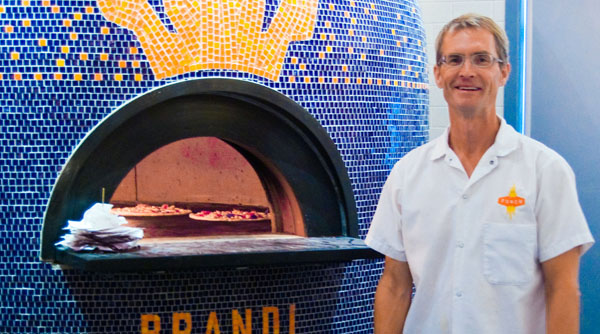
1996 – John Soranno opens Punch Pizza in Highland Park
When Soranno was eight years old, his family moved to Milan, where his father had been assigned to work at the Italian division of Braun. They lived in Italy for seven-and-a-half years, until Soranno was a sophomore in high school. Soranno didn’t have a formal culinary background: “The real food education I got was from the time spent in Italy. My mother was a really good cook, and … we spent a lot of time going to restaurants and travelling and participating in food-related activities in Italy.” His love of Neapolitan pizza developed naturally. “The school I went to was on a tram line, and just about every day my friends and I would stop at this one pizza place on the way home, for a snack,” he says.
In the 90s, after graduating from college with degrees in economics and aviation business, he worked for Northwest Airlines, hoping to get a job in in-flight catering services, but none opened up. “I wanted to put everything together,” says Soranno, speaking of his business degree and love of good food. “I always wanted to own my own business, and in the back of my mind, it always seemed like it was going to be a restaurant. … When I was considering Punch, I was also considering a whole host of other businesses. Everything from artisanal bread to a brewery. Ramen shops. But I kept coming back to the kind of pizza I remembered from Italy.” It wasn’t easy. Minnesota in the 90s was skeptical of what he was trying to do: “In the beginning, it was kind of a battle getting people to try – and to learn to appreciate – our style of pizza. Back then, it was a real departure: All of our pizzas were one size. They came on a plate. For the first six months, I didn’t cut the pizzas, because I wanted people to eat them like they do in Naples, with a fork and knife. There was a lot of resistance to that.”
Still, the lighter Neapolitan-style pizza caught on. Punch’s pizza was certified as Vera Pizza Neapolitana (true Neapolitan pizza) by the VPN Association, though Soranno says the certification was not a priority: “The VPN wasn’t something I was overly eager to get. … A lot of the better Neapolitan restaurants in Naples — some of them are VPN and others are not. We were adhering to the guidelines, but at Punch … well, the guidelines are pretty general, and our level of fanaticism toward what we do well exceeds the guidelines … Take dough or bread for example: it’s the same ingredients bakery to bakery, but that doesn’t explain why some bread is so amazing and some is not.”
Punch Pizza, 704 Cleveland Ave S, Saint Paul, MN 55116; 651.696.1066
1998 – Pazzaluna opens
This staple of the downtown Saint Paul restaurant scene opened to an immediate, enthusiastic response. In its sixteen years, it has won a slew of awards (both local and national), establishing it as one of the most popular and respected Italian restaurants in town, beloved as much for its evocative, romantic atmosphere as its food.21
Pazzaluna, 360 Saint Peter St, Saint Paul, MN 55102; 651.223.7000
1999 – Pronto closes
2001 – Mama D’s closes
2001 – I Nonni opens with Italian master butcher Filippo Caffari as executive chef
Caffari, a cheerful man with contagious good humor, came to Minneapolis to visit his brother-in-law, a pilot with Northwest, “and now it’s twenty years later!” he laughs. He got his culinary start working in Coco Lezzone. He was a master butcher in Rome (a one-year apprenticeship followed by three years of schooling and 20 years as a full-time butcher), but he had not been a chef until he came to the United States and got hired by Coco. Says Caffari, “I was a prep guy, and I was 39! There were no butchery jobs here — it’s like the cow comes in a box — so cooking was my second choice.” But his career as a butcher has proved influential in his work as a chef. When he opened I Nonni, the menu wasn’t what people were used to. “I brought guanciale, oxtail sweetbreads … all the things nobody has the guts to do. … Nobody could make our food because the only real place was Coco Lezzone, but it was closed. Luci was there, but that was old style. … Italy is not just pasta; we had a lot of seafood dishes … a lot of new items for Minnesota.” Caffari, along with other pioneers like Nidetz of Coco Lezzone, was reshaping how Minnesota thought about Italian food. “Now it’s much less [of an issue], but most of the people wanted starch with the meat. … Some Americans were attached to an old style, like chicken breast over spaghetti, but that doesn’t exist in Italy.”
I Nonni, 981 Sibley Memorial Hwy, Lilydale, MN 55118; 651.905.1081
2002 – John d’Agostino, one of Mama D’s sons, opens Caffe Biaggio.
John has carried on his mother’s St. Joseph’s Day tradition of feeding the poor.
Caffe Biaggio, 2356 University Ave W, Saint Paul, MN 55114; 651.917.7997
2002 – John Puckett and John Soranno, now business partners, open the second location of Punch
They have since expanded to nine locations throughout the Cities and suburbs.
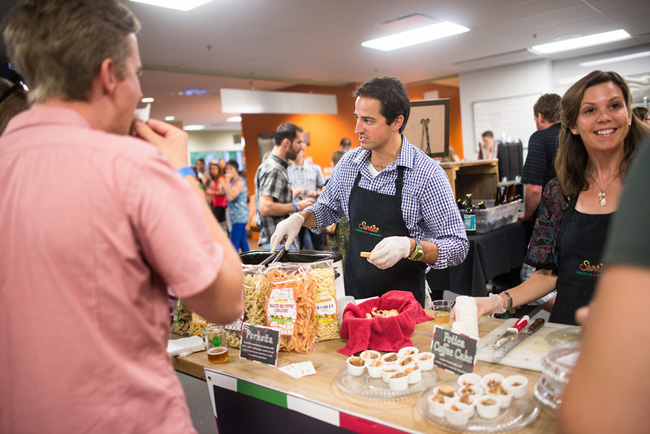
2004 – Tom Forti, great-grandson of Giulio Forti, forms Sunrise Creative Gourmet, selling Sunrise products wholesale15
2005 – Cafe di Napoli’s owner, Joe Piazza, closes the doors after 67 years in business10
2007 – Joe Piazza’s children, David and Nancy, re-open Cafe di Napoli, this time in the Skyway at 6th and Marquette10
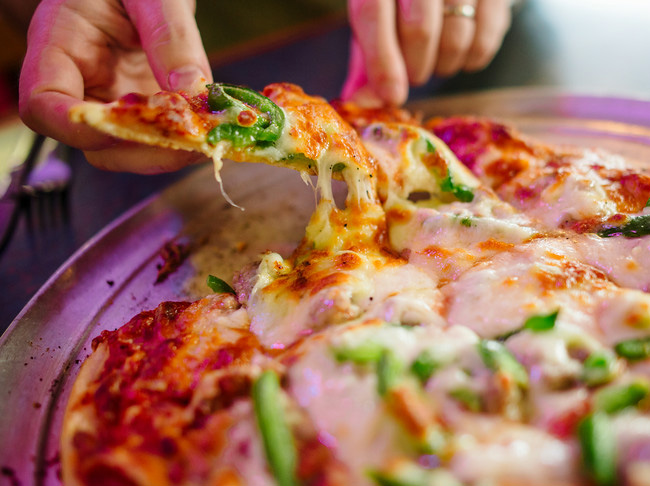
2007 – Romolo Mondo (of Romolo’s) retires, passing the business to his son, Jay22
2007 – W.H. Terrill, director of the St. Paul Department of Human Rights, tries to ban the use of the term “Hot Dago” on restaurant menus
Like Villoni in 1991, he is unsuccessful.
2008 – The Piazza children close Cafe di Napoli for good10
2009 – Mama D dies at the age of 94
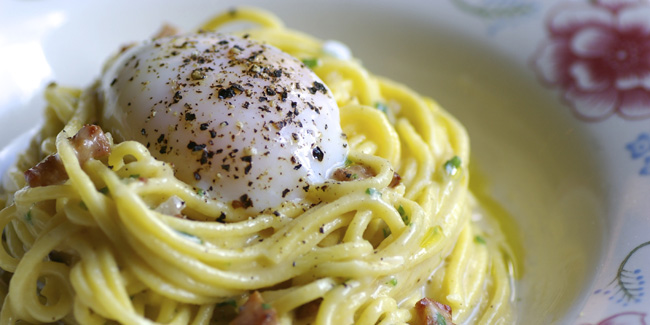
2009 – Isaac Becker opens Bar La Grassa
Bar La Grassa, 800 Washington Ave N, Minneapolis, MN 55401; 612.333.3837
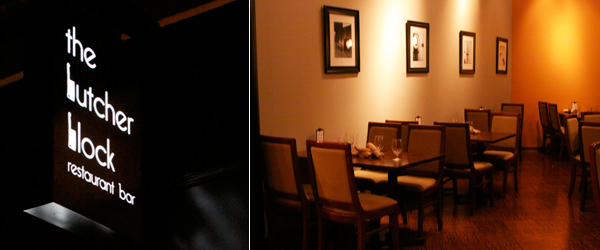
2009 – Filippo Caffari leaves I Nonni and opens Butcher Block
Butcher Block opened as a showcase for Caffari’s considerable expertise in butchery. “We make our own meat: our own pancetta, guanciale, salame, prosciutto. I cut my own steaks. Nothing’s coming pre-packaged,” he says. Still, Caffari’s approach remains the same as it was at I Nonni, though the style and focus has changed: “It’s very simple: Italian dishes, you use very good quality, three — maybe four — ingredients, and that’s it. A lot of people don’t have the palate to taste five or six ingredients in a dish; you don’t want to confuse them. Down there [at I Nonni], it was more classy, more elegant. … Here it’s more laid back. It’s a young people’s place, even if they are foodies.”
He admits, though, that balancing authenticity and fresh, high-quality ingredients puts certain demands on the menu. “Here, you have a very different climate,” he says. “For nine months, you have winter. … You have a long menu with heavier dishes. I can’t give you spaghetti allo scoglio [a light shellfish pasta] in January; it doesn’t make sense. … In spring and summer, well, it’s much easier then.” His dedication to both the craft and the heritage of Italian cooking is clear, but asked about what diners should look for to identify an authentic Italian restaurant, or what he looks for when evaluating Italian cooking, he gives the quintessentially Italian answer: that it’s all about the love and dedication that goes into it. “Most of the time,” he says, “if a friend invites me, they don’t make Italian; they’re scared. But I don’t care if you invite me to your house for peanut butter and jelly. I’ll enjoy it because of the company. This is the key to friendship.”
Butcher Block, 308 Hennepin Ave E, Minneapolis, MN 55414; 612.455.1080
2009 – D’Amico Cucina closes its doors
2009 – Figlio closes
2011 – Isaac Becker wins Best Chef: Midwest from the James Beard Foundation
2011 – Totino’s closes its doors
2011 – Jay Mondo sells Romolo’s to a family friend
The friend, Fred Ritchie, continues cooking until his death in 2014. The Ritchie family still operates Romolo’s.10
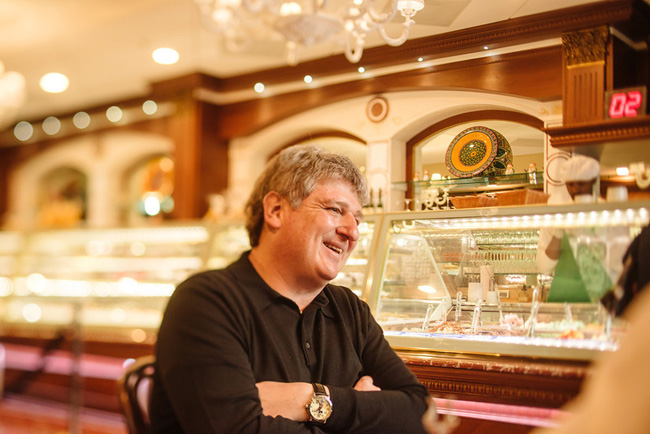
2012 – Cossetta’s opens after another sizable remodel12,13
The new pastry shop is constructed in Italy, taken apart, shipped to St. Paul, and put back together. They open a new restaurant, Louis, in the space, with executive chef Tom Hommes, and a menu created by Luciano Pellegrini, a James Beard Award nominee. The newest incarnation of Cossetta’s is almost as large as Mario Batali’s 50,000-square-foot market, Eataly, in New York City. It includes a market, two restaurants, a pasticceria (Italian bakery) and catering facility.
2012 – Kaskaid buys the Figlio concept from Parasole and re-opens the restaurant at a new location in the Shops at West End24
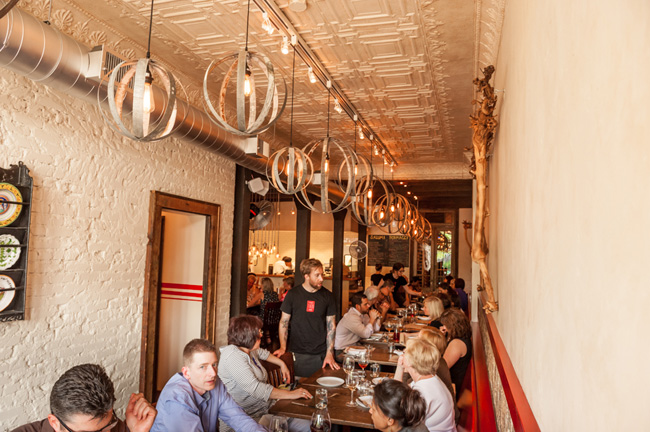
2013 – The Broders open Terzo, a wine bar, expading their 50th and Penn dynasty
2014 – Figlio closes once again
2014 – Sunrise Market opens a second location in St. Paul
The new market sells Sunrise pastas, as well as the ethnic specialties and bakery products that made the original Sunrise Bakery successful. There are also cooking classes, demonstrations, and events.16
NOTES
- Rudolph Vecoli, “The Italians,” in They Chose Minnesota, ed. June D. Holquist (Saint Paul: Minnesota Historical Society Press, 2003), 449-71.
- “Will Be a Fine Exhibit,” Saint Paul Globe (Saint Paul, MN), June 22, 1897.
- Carol Valentini et al., La Cucina della Razza dei Ciurri, (Kearney: Morris Press, 2003).
- Kitty Shea, “An Italian-Style Christmas,” Midwest Home and Garden, December/January 2004, 26-28, 30-31.
- Giovanna D’Agostino, Mama D’s Italian Cooking, with a Pinch (Minneapolis: American Book Corp, 1972).
- Tim Harlow, “Twin Cities’ Mama D Fed the Famous and the Needy,” Star Tribune, March 19, 2009, http://www.startribune.com/lifestyle/taste/41427957.html.
- James Lileks, “Remembering the Italian Restaurant Wars of Dinkytown,” Star Tribune, March 19, 2009, http://www.startribune.com/featuredColumns/41539847.html.
- Rachel Hutton, “Ristorante Luci,” Minnesota Monthly, July 2005, http://www.minnesotamonthly.com/media/Minnesota-Monthly/September-2006/Ristorante-Luci/.
- Al and Lucille Smith, “Our Story,” Ristorante Luci, http://ristoranteluci.com/our-story/.
- Tim Harlow, “Joseph Piazza Ran Café di Napoli for Decades,” Star Tribune, March 16, 2010, http://www.startribune.com/obituaries/87975592.html.
- Bill Ward, “The D’Amico Family Tree,” Star Tribune, September 25, 2009, http://www.startribune.com/lifestyle/taste/60673227.html.
- Jess Fleming, “At Cossetta’s New Louis, Food is Almost as Good as View,” Pioneer Press, January 16, 2013, http://www.twincities.com/restaurants/ci_22387126/at-cossettas-new-louis-food-is-almost-good.
- Gordy Leach, “Cossetta In St. Paul Opens After Impressive Remodel,” CBS Minnesota, October 18, 2012, http://minnesota.cbslocal.com/2012/10/18/cossetta-in-st-paul-opens-after-impressive-remodel/.
- Jan Willms, “Sunrise Market Expands from Iron Range to St. Paul,” Saint Paul Monitor, February 15, 2014, http://www.monitorsaintpaul.com/sunrise-market-expands-from-iron-range-to-st-paul/.
- Jess Fleming, “St. Paul’s Sunrise Market’s Big New Thing: Homemade Gluten-Free Noodles,” Pioneer Press, February 26, 2014, http://www.twincities.com/restaurants/ci_25233612/st-pauls-sunrise-markets-big-new-thing-homemade.
- Tom Forti, “Our Story,” Sunrise Creative Gourmet, http://sunrisecreativegourmet.com/our-story/.
- Michelle Leon, “Dari-ette Drive-in Opens Today,” Citypages, March 16, 2012, http://blogs.citypages.com/food/2012/03/dari-ette_drive-in_opens_today.php.
- Aaron Miller, “Rolleskating Waitresses or Not, These are the Best Drive-in Restaurants in the US,” Thrillist, July 7, 2013, http://www.thrillist.com/eat/nation/rollerskating-waitresses-or-not-these-are-the-best-drive-in-restaurants-in-the-us?ir=topmore.
- Lara Miklasevics, ”Restaurants Remembered,” Minnesota Monthly, November 2006, http://www.minnesotamonthly.com/media/Minnesota-Monthly/November-2006/Restaurants-Remembered/.
- “The Parasole Story,” Parasole Restaurant Holdings, http://www.parasole.com/history.php.
- Jeremy Iggers, “Dining Out: Under Pazzaluna’s ‘Crazy Moon’ in St. Paul,” Star Tribune, November 19, 1998, http://www.startribune.com/entertainment/dining/11498541.html.
- “History,” Romolo’s Restaurant, http://romolosrestaurant.com/history.shtml.
- James Norton, “Romolo’s in Payne-Phalen St. Paul,” Heavy Table, August 25, 2014, https://heavytable.com/romolos-payne-phalen-st-paul/.
- Joy Summers, “Figlio Closes Again,” Minneapolis Eater, September 22, 2014, http://minneapolis.eater.com/2014/9/22/6828789/figlio-closes-again.
- Joe Soucheray, “One Sandwich, Hold the Reason,” Pioneer Press, June 24, 2007, http://www.twincities.com/ci_6211603.
- Tobie Nidetz, e-mail message to author, July 7, 2014.
- Filippo Caffari, interview with author, July 29, 2014.
- John Soranno, phone interview with author, July 28, 2014.

What about Genos located on lower Payne avenue?
Engaging and extremely informative–thanks HT for such a well-written article. I haven’t lived in the Twin Cities for a while, but next time I visit, I will look up some of these restaurants.
There was a restaurant or club called Zelda’s named after F. Scott Fitzgerald ‘ s wife. I lived with Chuck Miller who did this huge painting of Zelda..but I moved to Montréal after and wondered if it ever opened or was part of something, Spaghetti Factory…..thanks!
You have forgotten DeGidio’s on West 7th in St. Paul. Their website says: Since 1933! Great food and nice people! http://www.degidios.com Also missing: Carmelo’s on Snelling! http://carmelos.com/Site/home.html
Great story! I know it’s hard to dig up all of the old restaurants. But I have to let you know you missed one on the most popular Italian American restaurants of it’s time. The Venice Cafe stood on 7th and Hennipen between the old shubert Theatre and Shinders on block E for many years until 1982. It’s founder was my grandfather Jimmy Graziano. He was a child when his family immigrated to the US from Sicily. I think it merged with the Casino Restaurant sometime in the 1960’s. The walls were painted with Venitian buildings and Gondola boys rowing down the canals of Venice. Great Spaghetti and Pizza too. He is still alive at 99 years old. Ask anyone anyone over 45 who went downtown and they will all have fond memories of the Venice Cafe.
You also overlooked Nonna Rosa’s in Robbinsdale.
The Carbone Family has also been an integral part of the history of Italian restaurant history starting in St.Paul.
David Boucher, wasn’t the Venice Cafe owned by John Marinelli and then his son, Vito, in the ’60s?
What about Rocco’s on Minnehaha in St. Paul?
Rusciano’s!! One of the very best! Brought calzoni to Minneapolis. Home to the Doc’s Special, the Compari, Saturday night Italian Buffet. Recognized by Mpls/St Paul
Magazine in their 25th Anniversary edition.
A hidden gem in New Brighton – Giuseppe’s Italian Ristorante. My favorite Mom-And-Pop restaurant. Reminds me of Chicago and Boston neighborhood restaurants. Joe, his wife and family have retired. But Stacy has kept the tradition and great food going.
Here is another to add to the missed list. In the early 1980’s Al Smith (Restuarante Luci et. al.) partnered with Gordan and Katherine Shutte (510 Grovland) and one other partner to open Alfredo’s, a northern Italian themed restaurant in St. Paul. They recruited Oakland, California native Whitney Guant from a restaurant in Bologne, Italy as executive chef. A number of Twin Cities chefs emerged from that restaurant. Future food writer B.J. Carpenter (A Minnesota Table and Come, you taste) succeeded Guant as executive chef. Carpenter then hired a future prominent, chef Jay Sparks. From Alfredo’s, Guant went off to help Tom and Molly Broder develop their pasta business and eventually left town for California. Carpenter went on to Black’s Cafe in Minneapolis and Jay Sparks became ring master of the D’Amico empire.
http://saintpaulhistorical.com/items/show/288, Yarusso Bros on Payne, they built the first bocce courts in the area.
Rusciano’s Restaurant downtown Minneapolis near the Court House. Phil Rusciano was best man at my wedding in 1970. Lost track of him.